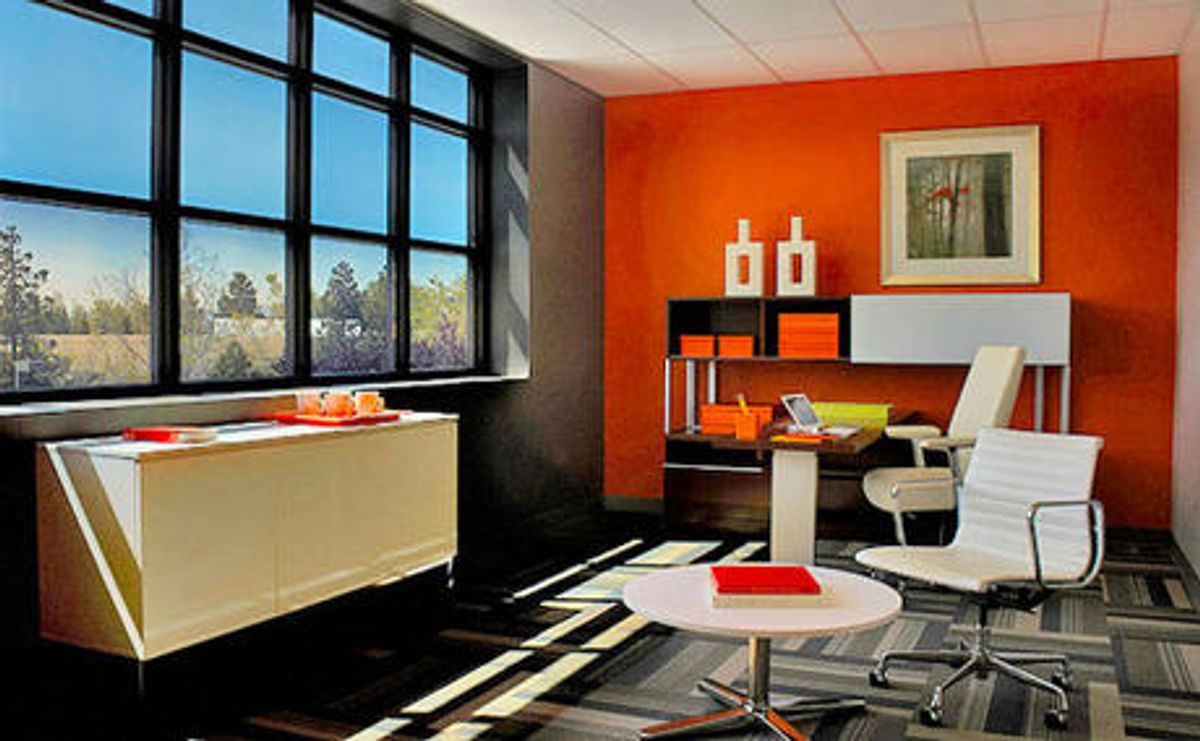Automatically tinting windows that spare occupants from glare and save energy appear to finally be taking root in commercial buildings.
Startup View, which makes so-called smart windows, today said that glass and ceramics giant Corning has invested in the company as part of a $60 million series E round of funding. The two companies intend to do joint research to improve the performance and lower the cost of View’s electrochromatic glass products. “There will likely be material science and (manufacturing) process development work. Assuming that’s successful, we’ll also work on engineering and scale-up,” says View CEO Rao Mulpuri.
It’s a sign of confidence in smart window technology, where an electric charge triggers a color change to block sunlight and unwanted heat. Last year, French construction company Saint Gobain acquired Minnesota-based Sage Glass, which makes similar auto-tinting window technology.
The promise of electrochromatic glass is that it cuts buildings’ energy use by using more natural light and reducing the heating and cooling load. View estimates that its “dynamic glass” can cut lighting by about 20 percent and the cooling load by 25 percent at peak times.
Still, despite decades of development, auto-tinting glass is rarely used, even in commercial buildings with big energy bills that might justify a higher-cost product. View’s Mulpuri says that company has managed to reduce the cost of dynamic glass in part by modifying production techniques from the flat-panel display and semiconductor industries. In its factory in Mississippi, View applies two layers of a ceramic metal oxide coating onto glass panes with a sputtering vapor deposition process. Applying a voltage causes the electrochromatic material to absorb or reflect light and darken.
During manufacturing, panes of glass, which can be as large as five feet by ten feet, are wired so they can be controlled electronically. Then they are fitted with a second pane of clear glass. The window can be operated from a wall switch, set on a schedule from a tablet or computer, or changed based on light and temperature sensors connected to a commercial building management system. Competitor Sage has similar capabilities with its windows.
The push to improve commercial building efficiency is helping create demand for more intelligent components, such as lighting controls or computer-optimized HVAC systems. But better energy efficiency is not the only selling point of this technology. Instead, it's because building owners want a better experience for people inside from reduced glare and heat, says Mulpuri. The company has its dynamic windows installed in hotels, hospitals, and office buildings.
View and Corning hope architects and designers will incorporate automatically tinting glass into new types of building facades. “We believe the precise surface attainable through our fusion glass process combined with View’s leading expertise in dynamic glass technology will help us develop an innovative glass that can make dynamic windows a bigger part of exterior architectural applications,” Corning’s executive vice president and innovation officer Martin Curran said in a statement.
Smart windows face plenty of commercial obstacles. Will building owners forego traditional shades and blinds and pay more for automatically tinting glass? The devices can be connected to a building network, but that makes installation more complex. Whether these windows become more than a curiosity ultimately depends on whether smart glass makers can appeal to architects and deliver tangible benefits for building occupants and building owners’ energy bills.
Photo: View's tinting windows in an office environment. Credit: Flickr user jandrograu for View.



